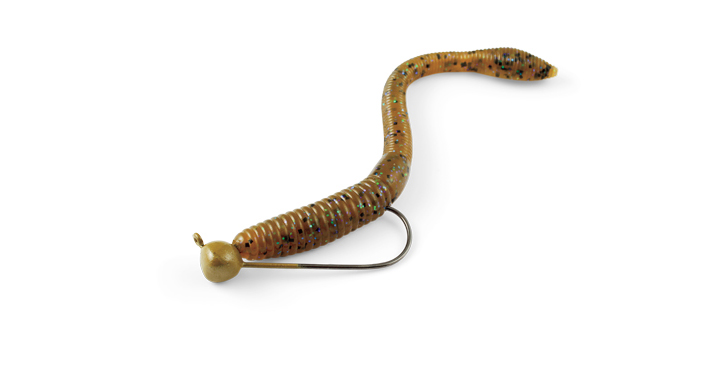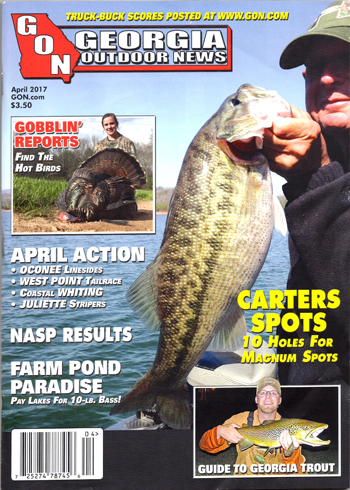
10 Shakey Head Tips to Become A Better Fisherman
Written by Bill Payne
Sept 2017
The venerable shakey head is one of the finesse fishing techniques that is a staple in any good bass fisherman’s bag of tricks. From top touring pro’s to the beginning fisherman, the shakey head is a must have. Several Top tier pro fishermen have made a great deal of money fishing the shakey head. Learning to master this technique is not hard but there are some basic do’s and some don’t’s that you need to know if your just learning this technique. In this short article we will cover the basics and how to improve your success on shakey heads.
Let’s start at the beginning.
You will need to have the right equipment and that will consist of a spinning rod of around 7ft in medium action with a 2500 size reel. The line is critical as well. You’ll be best served with straight 6 to 8 lb fluorocarbon or 10 to 15 lb braid with an 8 lb fluoro leader of about 6 or 7 ft long. The knot you use to connect the braid to the fluoro is critical and there are several that you can learn to tie via the internet. I like the Crazy Alberto myself. The FG knot is a great knot as well. Another new development in shakey heads is the use of Tungsten rather than lead. Picasso offers Tungsten in their Take Down and Shake Down heads. It is a definite advantage due to the increased sensitivity and smaller profile.
The most common sizes of jig heads with be 1/8, 3/16, and ¼ oz. My rule of thumb is 1/8 in 10 feet or less but it’s easy to work it down to 20 ft water depths. I use 3/16 in water 10 to 25 ft and ¼ in over 25 ft.
As for plastics, a 4 to 6-inch straight tail worm like a finesse worm would be a great starting point. You can experiment with longer baits like 7 inch straight worms. Small crawfish type profiles can be great too. In North Georgia lakes, we’re primarily chasing spotted bass and the colors we generally have the most success with the natural colors like green pumpkin, water melon, etc.. Big Bite Baits have a great selection to choose from.
Now to the meat of what you need to know.
You want to find a likely target area like a rocky point or something similar and make your cast. Let your bait sink to the bottom on slack line (leave your bail open). Always be a line watcher and be alert because fish often can hit the worm as it falls. Otherwise, let it get to the bottom and begin working it slowly back to the boat. WAIT… I mean very slowly!!! Even if you think you’re working the bait at a snail’s pace, slow down some more.
How you work the bait means everything. Always maintain bottom contact…ALWAYS!!! You likely won’t catch any bass jerking and pulling the bait up off bottom. With your rod at the 10:00 position, begin to slowly move your bait with a bow in your line. One of the most important keys to fishing a shakey head is fishing it on a slack line. This is the number one problem I see with people that are just learning this technique. Slack line is critical. You want to impart a very subtle shake, at times, to make the worm look natural. Move it only a few inches at a time and pause for a few seconds before moving it again. Other times, you want to move the worm slowly without shaking it and keep it in the strike zone area as long as possible. Really slow down when you feel cover like rocks, stumps , or submerge brush or trees.
Remember, your best bet is to slowly drag the bait across the bottom, keeping in contact with the bottom at all times. Even though its name, shakey head, implies that you want to shake it all the time, I find that it may be better to just subtly and slowly drag it across the bottom imparting no additional action.
You must be a line watcher to master this technique. As mentioned earlier, sometime a fish gets it on the fall and even as you are working your bait on bottom a fish may take the bait and start swimming off with it. Most of the bites will be very soft and if you are waiting on feeling the old tap tap of the strike, you’ll miss 90% of the bites you get. Most time the line just tightens up and the fish is slowly moving off with the bait. Experience will allow you to better discern the difference between being stuck on a pebble and the line tightening up when a fish gets it. Either way, when you feel something and you are wondering “is that a bite” just set the hook. It doesn’t cost a thing. You’ll get the feel as you fish this technique more and more.
The last thing I want to mention is searching and finding the key areas to employ the shakey head. Naturally this is key to any technique and so you need to find where the fish are located to give you the best chance for success. There are usually fish around boat docks and where the docks are in the right depth zone you may find a key area. Many times, there may be some brush planted to attract fish. Target points with rocks, stumps, or brush or trees that have been placed as fish holding cover. You may find the areas with your sonar but you can also find them as you work your lure on the bottom. Your target depth commonly will be from 5 to 30 ft in our North Georgia lakes. When you find the key spots of structure with Rock, brush, or stumps, slow down and cover the area thoroughly. Spotted bass with bite the shakey head when nothing else works.
Tight Lines & Good Luck



